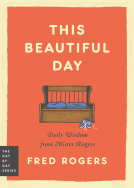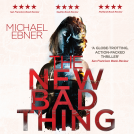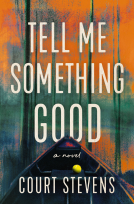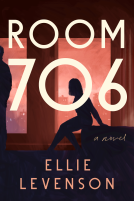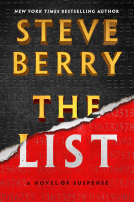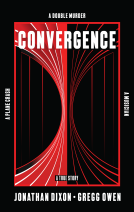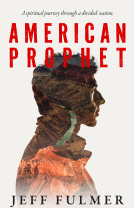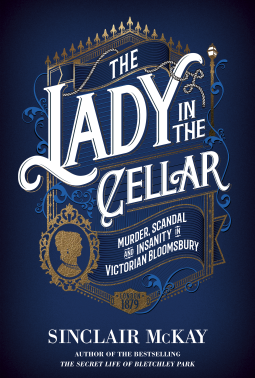
The Lady in the Cellar
Murder, Scandal and Insanity in Victorian Bloomsbury
by Sinclair McKay
This title was previously available on NetGalley and is now archived.
Send NetGalley books directly to your Kindle or Kindle app
1
To read on a Kindle or Kindle app, please add kindle@netgalley.com as an approved email address to receive files in your Amazon account. Click here for step-by-step instructions.
2
Also find your Kindle email address within your Amazon account, and enter it here.
Pub Date Oct 30 2018 | Archive Date Nov 01 2018
Quarto Publishing Group - White Lion Publishing | White Lion Publishing
Talking about this book? Use #TheLadyInTheCellar #NetGalley. More hashtag tips!
Description
On 8th May 1879, the corpse of former resident, Matilda Hacker, was uncovered by chance in the coal cellar. The investigation that followed this macabre discovery stripped bare the shadow-side of Victorian domesticity, throwing the lives of everyone within into an extraordinary and destructive maelstrom. For someone in Number 4 Euston Square must have had full knowledge of what had happened to Matilda Hacker. Someone in that house had killed her. How could the murderer prove so amazingly elusive?
Bestselling author, Sinclair McKay delves into this intriguing story and sheds light on a mystery that eluded the detectives of Scotland Yard.
Marketing Plan
Campaign Focus:
Promote the elusive mystery of the murder of Matilda Hacker to fans of true crime and murder mystery from bestselling author, Sinclair McKay.
Key Selling Points:
- Perfect for fans of historical crime fiction such as the bestselling book, The Suspicions of Mr. Whicher, this true story is expertly researched and retold by bestselling author Sinclair McKay.
- Sinclair McKay, bestselling author of The Mile End Murder, turns his attention to this never-before-told story.
- Pitch to long Lead publications that covered the author’s previous books
Key Campaign Activity:
- Center the promotion of Darkness in Bloomsbury around the success of Sinclair McKay’s previous publications
- Target Books and Literature outlets focusing on murder mystery, history, and true crime
- Preview of the book on the day of the murder
- Pitch to long-lead publications that covered the author and his books
Marketing:
- Goodreads giveaway around publication date
- First look preview of the first chapter on the day of the murder, May 8th, shared on Quarto Knows social media and the author’s website
Publicity / Media: Pitch to long Lead publications that covered the author’s previous books –The Guardian, NPR, Fresh Fiction, spymusuem.org, Foreword Reviews, The Globe and Mail, Crime Spree Magazine
Consumers / Bloggers: Dread Central, Smart Bitches, Trashy Books, Tiptoe Fairy, Writer unboxed, The Rebel Chick, Hell Horror, The Rumpus, Guernica, The Millions, RT Book Reviews, Bookreporter.com, Booklist Online, The Review Review, New Pages, BookTrib, Narrative Magazine, Conservative Book Club, Quill & Quire Online, Lore
Murder Mystery / True Crime Sites: Mysteryreaders.org, MysteryReadersInc.blogspot, Crime By The Book, Crime Traveller, Reader’s Favorite, True Crime Reader, True Crime Enthusiast, Clouded In Mystery, Criminal, The True Crime Files
Available Editions
| EDITION | Other Format |
| ISBN | 9781781317983 |
| PRICE | $28.00 (USD) |
| PAGES | 320 |
Average rating from 87 members
Featured Reviews
 Robin B, Reviewer
Robin B, Reviewer
This is a dramatic, true crime account of a murdered woman found in the basement of a Victorian boarding house. Was it the maid? Was it another boarder? Was it the landlord or his brother? I was kept guessing.
The random twists and turns, plus the aftermath of this case was bizarre, and kept me reading to find out what happened next.
Thanks to NetGalley and the publisher for a free copy of this ebook in exchange for an unbiased review.
 Reviewer 201788
Reviewer 201788
This one defied expectations for me. I'm not particularly interested in Victorian-era stories, I usually find trial narratives one of the more tedious elements of true crime, and I'm iffy on true crime that's pre-1940s-ish. I'm so glad I took the chance despite it having all those elements (honestly, I might've only given it a shot for the really attractive cover).
This story of a murder discovered nearly two years after it happened in a London boarding house run by the family of a Luxembourg immigrant is populated with a quirky cast of characters from in and around the building, including the dead woman herself as perhaps the quirkiest of them all. It makes for a great truth is stranger than fiction tale and is as twisty-turny as they come. I thought I saw the answer coming a mile away multiple times and was consistently wrong.
Fair warning and I don't think a spoiler - it's not definitively resolved what happened to the victim, Matilda Hacker. There are plenty of interesting theories and some likely combination of circumstances is wrapped up in the story told here but it's not certain or even as close as some stories come to being so. I know some people hate that in true crime so be aware. Not knowing for sure doesn't bother me, but there are a few too many rhetorical questions and although the trial testimony and inquiries were far more interesting and better presented than I've read elsewhere, they did make up a little too much of the second half after a first half that's completely riveting and atmospheric.
The writing is compelling, I loved the inclusion of other scandalous stories and headliners of the time and detailed but readable context about the city, the community of Germanic subculture and of course, Victorian morality and pearl-clutching at its finest while still obsessing fanatically over the grotesque and gory details.
As a bonus, this author has a rich and wonderful vocabulary. I saw words I haven't seen since college, made for unexpectedly delightful reading.
A giant dolls house open to the nation with many different nationalities. A new lodger moved in the Lady in the cellar. The body was found wrapped up under the coal it appeared to have been strangled. All society and the newspapers were fascinated with the anonymous body of the fine lady. This Euston Square Mystery takes you in-depth into living in London at the end of the 1800’s the quickly moving changes in society with people from foreign countries coming there to make a better life. It shows how life can quickly unravel when accusations are made. You follow the players of this mystery though the courts and feel you are actually witnessing the proceedings.
I was given an ARC of this book in exchange for an honest review.
Thanks to NetGalley and the publisher for a free copy of this ebook in exchange for an unbiased review.
This is the true account of how in 1879 the decomposing body of a woman was found in the coal celler of number 4 Euston Square which at the time was a boarding House.
What follows is the police investigation into trying to find out who the woman was , who murdered her, why was she murdered and how come nobody in the house noticed that there had been a decomposing body in the celler for nearly two years.
The author gives the reader an in depth look at the case and gives some interesting insights as to what may have happened.Was it the maid, was it another boarder, was it the landlord or his wife. The case is bizarre from to start to finish with lots of twists and turns.
This part of my review contains spoilers
The book doesn't resolve what happened to the victim, Matilda Hacker nor does it in my opinion shed new light on to the mystery, but that is my opinion and others may feel differently.
A book I think will fascinate true crime readers and mystery readers alike.
 Librarian 431790
Librarian 431790
The dramatic, well written and fascinating account of a Victorian true crime.
It's well reaserched, well written, and entertaining.
Recommended!
Many thanks to Quarto Publishing and Netgalley for this ARC
 Rosemarie C, Reviewer
Rosemarie C, Reviewer
Well written book about an intriguing case, that also provides details of life in London in the 1870s for immigrant people and their families, as well as those who took lodgings in private houses.
Historical, true crime, Victorian London... quite the combo! It took me a bit to get into this one as it’s very detailed. There is a lot of information. You can see the work that was put into the research. Thank you NetGalley for this copy in exchange for an honest review.
This book was so interesting. It is the retelling of a true crime from the 1800s.
A woman is found in the cellar of a lodging house, who she is, or how she got there is unknown.
Without the help of modern day forensics Police try to piece together the mystery of what happened at Number 4 Euston Square.
McKay did an excellent job of making this book interesting and enjoyable to read.
I find that sometimes when authors attack a non-fiction subject the writing is redundant and rambling, or just plain boring, going into detail about the things that don't need to be detailed
This book flowed well and kept my interest. I wanted to read more about this family and see how their story ended.
I would recommend this book to anyone who enjoys true crime, or Victorian Era settings.
 Pauline S, Reviewer
Pauline S, Reviewer
This is an intriguing real life murder mystery and it had me gripped. It definitely pulled me in from the start and was hard to put down. Thank you to the publisher and NetGalley.
I do love a good murder mystery and this is definitely a good murder mystery!
A real life Victorian tale of crime – when the body of a woman is discovered in the cellar of a well respected boarding house at 4 Euston Terrace, London.
The body has been there for some time as it is in a state of advanced decomposition – the key interest for me was that in a time before scientific advances in forensic science – how did they establish who the person was, their age etc – where they had come from, what had happened them and how they had finished up in the cellar of this particular house!
The Lady in the Cellar read very much like a novel – drawing the reader in with anticipation and curiosity – I enjoyed this book so much, the author brought these characters to life – putting flesh on the bones of long dead bodies!
This part of my review contains spoilers...
The only negative being that it was an unsolved crime and the last 10% of the book went through different scenarios that weren’t really necessary – I preferred the open ending and for the reader to make up their own minds or to just accept it won’t ever be solved.
That being said – I totally recommend this book – I hadn’t heard of the crime before and I loved the book so much that it sent me researching on the internet for any information I could find!
Thank you to NetGalley and the publishers White Lion Publishing for providing me with a digital advance reader copy for my honest and unbiased review
 Reviewer 396470
Reviewer 396470
I found this very enjoyable.
I thought it was very well researched and had excellent detail from period sources and transcripts. A real insight into social/domestic lives, immigration, criminal proceedings and mental health in 19th century London.
A fascinating account of a historical murder mystery.
 Reviewer 492564
Reviewer 492564
This is a terrific account of a fascinating murder case. In 1879, the desiccated body of a woman was found in the coal cellar of a middle-class London boarding house. The landlady was oddly oblivious to the goings-on in her home; the landlord may or may not have been sleeping with the maid; and the maid was definitely sleeping with his brother and likely murdered a boarder for her money and valuables. But the maid was acquitted and wrote a scandalous and bizarre pamphlet about the murders, adding in that the landlord and his brothers had also killed a child and fed it to a dog, among other depravities. A libel suit ensued. The landlord went mad. His wife remained oblivious. The maid moved in with the brother. The entire complicated story is beautifully laid out and told by McKay, who provides just the right amount of detail about society and surroundings to make the reader feel present in the mayhem. True crime readers, people interested in the Victorian age, and those fascinated by changing society, class, and gender roles will enjoy this.
 Book B, Reviewer
Book B, Reviewer
I’d never heard of this murder in Euston Square in London so this was a fascinating read. Imagine a body found in a cellar which has been there for two years at least? How, even in London with its slums and growing chaotic population does someone go missing without being reported? When it’s a respectable woman in a respectable boarding house, the mystery grows
The boarding house was a fascinating mix of immigrants of German and Luxembourg descent. There’s a quirky bunch living there and no one seems to have any idea of the body or who it might have been. The police are called and the trial of the century begins..
Apart from being areal life crime story, this is a fascinating look at London itself. The locations sadly are no longer there and I think there should be an old fashioned map in the book as real ones don’t show many of the actual locations! The house is now in the area of Euston Station for example.
I also enjoyed the way the main story was enhanced with stories of other scandals and historic events of the time. This is a trial narrative so could have been a bit staid, but it was an fascinating look into London Victorian society at the time.
And that poor woman in the cellar. Is the mystery finally solved? I’ll leave that up to you. For me it remains an historically complex mystery on many levels.
 Jan T, Reviewer
Jan T, Reviewer
historical-places-events, historical-research, crime, women, social-history, London, England *****
This is a revisiting of a complex murder case discovered in 1879. The victim was found eighteen months after her death in the coal cellar of a rooming house in a respectable area of London,England. With due diligence the identity of the murdered woman was discovered, a process made unusually difficult because she preferred to dress and behave as an ingenue regardless of present age, took up residence under an interesting variety of names and had the finances to support this lifestyle. The family owning the house was put through intense scrutiny, potential murderers were put forth, and the new CID and its detectives were trampled by the press.
There is much related about the era, the plight of skilled immigrants, and the great divide between classes. It quickly becomes evident that a whole lot of research has been done and turned into a book that is infinitely more readable than a thesis on historical criminality.
I requested and received a free ebook copy from Quarto Publishing Group-White Lion Publishing via NetGalley.
 Marie A, Reviewer
Marie A, Reviewer
True story of a woman found in the coal cellar of a boarding house on Euston Square in London. The investigation starts with trying to find out who she was. Had she lived or worked there at one time or had her body been buried there after being killed some place else? Several businesses had operated in the backyard of the house. Maybe it was someone who worked there. Who killed Matilda? I found the way it was investigated fascinatIng. No DNA experts, just great police work. This story felt more like a novel than true crime and I really liked it. It is well written and researched. I would read more from this author. I found it interesting enough to look up this case on line. I received this book from Net Galley and Quarto Publishing for a honest review and no compensation otherwise. The opinions are my own.
 Wendy M R, Book Trade Professional
Wendy M R, Book Trade Professional
This is my favourite genre, and the genre I wrote the book about Dr Edward William Pritchard The Poisoning Adulterer.. I could not put this book down and I was hooked from the first page. This book is well written and dramatic and offers a fascinating account of a Victorian true crime.
Recommended!
Number 4, Euston Square was a home like many in Victorian London. A boarding house, it was respectable, well-kept, and hospitable to those staying there. Yet beneath that veneer there seemed to be a darkness lurking.
In early May 1879, the corpse of a woman is discovered in the coal cellar. An investigation discovers she is an elderly woman named Matilda Hacker, a former resident of the boarding house. Questions are immediately raised. How did she die? How did she come to be buried in the coal cellar? And most importantly, who could have killed her?
In the investigation that followed, every resident of the home was scrutinized and more than a few secrets were brought to light. Someone in that house had killed Matilda Hacker and someone knew the truth.
I would like to thank NetGalley and the publishers for a copy of this ebook in exchange for a review.
The Lady in the Cellar is a true story. In the early summer of 1879, a body was discovered in the coal cellar of a boarding house. Almost every person who was there was a potential suspect. It was a story the newspapers grabbed on to, especially once more and more details started to come to light. And in a time when the so called 'middle class' were coming in to their own and the lines between classes were sometimes blurred, there were an abundance of details to titillate and delight.
The case of the murder of Matilda Hacker is a bizarre one. And it is one that the author covers in great detail. At times it feels like McKay is trying to reach a page count with their writing as there are long passages going in to details that nothing to do with the case itself. While it can be interesting to read about some of history about the family that owned the boarding house, with no actual relevancy, it leaves one to wonder why it was included.
Some of the other reviews I have seen where the reader did not finish the book lament the fact that McKay's writing can be a bit tedious at times. It is an opinion I must agree with. Attention to detail is one thing, but to inundate a reader with information can be a it much. The actual trial and its aftermath take up roughly half of the book. And it is this half of the book that is the most interesting. It is slogging through the first half of the book and getting to the 'good bits' however, that can be difficult.
It is very obvious that McKay did a great amount of research in writing The Lady in the Cellar. The book is chock full of information and little details to draw the reader in. And while the actual case of the murder of Ms. Hacker was never solved, McKay gives a plausible 'what if?' scenario towards the end.
While I am sure there are those readers who dislike true crime books for one reason or another, I urge my readers to give this one a try when it hits shelves. In a day and age of sensational media such as ours, it is little wonder that the case of the lady in the cellar was so fascinating to the reading public of the day. It is my hope that modern day readers will enjoy it as well.
 Fran E, Reviewer
Fran E, Reviewer
The Boarding House..."introduced a measure of enforced proximity with strangers...in the nature of such houses unexpected intimacy could be sparked; occasionally with the darkest consequences...". Many boarding houses were furnished with heavy curtains and carpets giving the illusion of safety, protection from the cold, and from chaotic street noise. Severin Bastendorff and wife Mary leased a boarding house at 4,Euston Square, Bloomsbury. The household seemed elegant and respectable. Severin and his ten employees made well received and greatly valued bamboo furniture in a detached workshop behind the lodging.
4, Euston Square was a house with secrets soon to be unearthed. There had been a shortage of paying guests. When businessman Mr. Brooks planned to move into their most expensive apartment, Mary and maid-servant Hannah Dobbs readied the rooms. Room rental costs did not include coal for the resident's fire. A section of the coal cellar needed to be emptied to accommodate Mr. Brooks's coal supplies. In rearranging the coal cellar, a large bone from the decomposed, soon to be identified, body of 60ish lodger Matilda Hacker was found. Remnants of an elegant black silk dress and a decorative brooch were found near the body.
Eccentric spinster Matilda Hacker always dressed in extravagant, outlandish clothing befitting a young miss. Despite being a rich property owner, she refused to pay dues and taxes. Trying to constantly elude authorities, she switched lodgings frequently registering under a variety of pseudonyms. Matilda Hacker, registered at Euston Square as Miss Uish, disappeared on May 8, 1879. Arguably, Matilda's body had been buried under coal in the cellar for two years. It was up to Inspector Charles Hagan to try to unmask the murderer.
Who did it? Was it the maid-servant, Hannah Dobbs? Why did she pawn Matilda's gold watch? Why was Mary Bastendorff unfamiliar with her boarder Matilda? Did Severin Bastendorff have a "special connection" to Hannah Dobbs? Why was the description of a prisoner's beard significant?
"The Lady in the Cellar: Murder, Scandal and Insanity in Victorian Bloomsbury" by Sinclair McKay is an unsolved true crime read. Author McKay's presentation of the facts, suppositions and theories make for a fascinating read. Highly recommended.
Thank you Quatro Publishing Group-White Lion Publishing and Net Galley for the opportunity to read and review "The Lady in the Cellar".
 AliceMaud M, Reviewer
AliceMaud M, Reviewer
This is a fascinating true story which has been extremely well-researched and has a long list of interesting references some of which I plan to dip into. The author's obvious enthusiasm for his subject is very infectious, the book is easy to read, and I thought it was a very good read indeed. The only downside for me is the author's occasional tendency to "refer forward", referencing something that the reader doesn't yet know from the narrative. This left me feeling a bit cheated, in that I didn't then have the opportunity to speculate and find whether or not I'd been on the right track.
"The Lady in the Cellar" will appeal to those who are interested in Victorian era fiction as well as non-fiction, and to fans of murder mysteries in general, particularly those who enjoyed "The Suspicions of Mr Whicher, Or The Murder at Road Hill House" by Kate Summerscale.
With thanks to the publisher and to Netgalley for giving me a copy of the book in exchange for this honest review.
 Carol E, Reviewer
Carol E, Reviewer
In general, true crimes don’t interest me. Give me a fictional and a quirky fictional detective who will definitely solve the case and I’m usually happy. However, this year I’ve been trying to broaden my reading habits to include more non-fiction and classics. The Lady in the Cellar is a fascinating book examining the murder of Matilda Hacker in the 1870s and the events surrounding the body’s discovery and the trials that resulted.
In a lot of ways, The Lady in the Cellar is similar to the fictional detective stories I enjoy. We have a quirky cast of characters, including the victim herself, who was a well-off woman but did not behave in the way single women of her age were supposed to in that era. We have a semi-famous detective, Inspector Charles Hagen, who had already been in the papers a few years earlier as the bodyguard of the Prince of Wales and was a rising star in the Criminal Investigation Department. We have several suspects, including the boarding house owner and a maid who he may or may not have been having an affair with, his brother who may also have been having an affair with the same maid, and the other boarders in the house.
McKay does an excellent job of leading us through the discovery of the body, the investigation and the trial. Courtroom dramas can get a little tedious sometimes, but the story here really is gripping. The people act as outrageously as they do in fiction, telling lies, ignoring things that are right under their noses. The body was in the cellar for two years, bones were found, but the people living in the house would have us believe they didn’t have any suspicions. There’s a murder trial and the suspect is acquitted. She then goes on to allow a published to produce a tell-all pamphlet that alleges even worse incidents occurring in the house. Then we have a couple of trials for libel. The mystery keeps the public, and the reader, enthralled.
I found it interesting that the public was so engrossed in reading about the case. “One of the effects of the 1870 Education Act was a dazzling fast rise in rates of literacy; but this improvement had, in turn, been fuelled by the increasingly salty and sensational nature of popular newspapers, periodicals and newspapers. Reading as a mass pursuit had become a terrific source of escapist entertainment . . . And there was no question that for readers around the country, lurid real-life stories of murder were particularly satisfying.”
The descriptions and period details bring the era to life. The people, places are events are real, no matter how unbelievable that may seem. McKay also does a good job of letting us see how today is not that different from then: the alienation people can feel in cities, the obsession with real life crimes (just look at tabloid headlines), the stigma of mental health issues, how class can effect the way the justice system treats an individual.
The case is not solved. McKay gives us a rather strong possibility, but that’s all it is – a possibility. The Lady in the Cellar is well-researched and easy to read. It’s full of facts and details, but it flows well and kept me interested.
A true crime book that takes you to the late 19th century home in London where a body is discovered in the cellar, but whodunnit?
You get introduced to all of the people who lived there, and get glimpses into their lives, scandals and all. You meet the victim, the suspects, and get taken to the courtrooms to hear the testimony through first hand accounts that are used throughout this book. This gives a sense of immediacy, and a taste for how things really were, including prisons, and lunatic asylums.
I read a lot of murder mystery books, as my shelves on GoodReads will show you, and this was an entertaining read as it kept you guessing as to who the murderer actually was, and what the motive was.
The Lady In The Cellar by Sinclair McKay is out now in hardback.
I was given this book for free in return for an unbiased review, so my thanks to NetGalley and White Lion Publishing (the publishers) for this book.
Check out my GoodReads profile for more reviews.
 Cleo P, Reviewer
Cleo P, Reviewer
The Lady in the Cellar – Sinclair McKay
So the darker nights have encouraged another foray into Victorian true crime with this, the second book I have read by Sinclair McKay this year.
The Lady in the Cellar refers to a Miss Matilda Hacker who was found amongst the coal in a cellar in a boarding house in Euston Square in London, she’d been dead for quite some time by the time her body was found in 1879 and at first the police were at a loss even as to her identity. You see her final resting place in a boarding house in a fast expanding London lends itself to a more anonymous lifestyle, one where the occupants lived alongside strangers in rooms of varying sizes and facilities.
Matilda Hacker was an eccentric, she’d moved to London from her native Canterbury on her sister’s death – these two spinsters were a familiar site when they took their daily promenade in their lavish silk dresses, dresses which were far too youthful for the ‘elderly’ women who wore them. After her sister’s death she moved away pursued for rates and other bills she could easily afford to pay and took up residence in boarding houses in the capital. The rise of this ‘new’ way of living is expertly explained within the book.
When she came to Mr & Mrs Bastendorff’s bording house it was to be given a furnished room, the use of the water closet and a cupboard to store food and other perishables. She could buy her own food for the servant, Hannah Dobbs, to cook or she could give Hannah to fetch the items herself both means were used to be fed, watered and generally kept an eye on. As Matilda Hacker was in her late sixties by this time, it doesn’t seem to bad a way of life.
We are also treated to the background of the Bastendorffs, the move of Severin from his native Luxembourg to London alongside his sister and a troupe of brothers is also a fascinating insight into how foreigners assimilated into life at this point in history. Severin was a furniture maker who had set up his own business by the time a body was found in the basement of his house. His wife was English and the pair had four small children. This was the rise of the middle classes, the house, the servant and regular income from the business in the back yard as well as the money they made by renting out rooms within their stylish house.
As you can tell there is plenty of contemporary details to be gleaned and Sinclair presents his story well long before we get to the trial, which lets face it is where the fun begins. The police decided that the perpetrator was Hannah Dobbs, yes the servant! That must have caused more than a little disquiet amongst the middle-classes, no-one wants a murderer living in their home. There were links to pawn-brokers amongst other clues as to what happened to Matilda’s belongings, but the trial was only the beginning.
This was a meaty story with the tendrils once again illustrating that the Victorians were not quite how they have been painted in more recent history. For those of us who were taught they were all prudes, this seems far from the racy story that Hannah sold to the papers! If you want to know more, you should read The Lady in the Cellar.
I'd like to thank the publishers White Lion Publishing for allowing me to be immersed into this story that ends sadly for more than one of those who, perhaps completely innocently, got caught up in a murder that captured the nation's attention. This unbiased review is my thanks to them, and to Sinclair McKay for his diligent research which was relayed to this reader in such a well-structured manner that it became a compulsive read.
Sinclair brings to life a true Victorian crime and the bizarre events that followed. The writing is wonderful and he brings the characters to life. I felt like I was transported right into the novel.
 Caitlyn L, Reviewer
Caitlyn L, Reviewer
This might be one of the most incredible true-crime books I’ve ever read - and I’ve read plenty. If you wrote this case as fiction, it would be derided as too ridiculous to be believed. However, it all really happened in the late 1870s, and reading it is an absolutely fascinating insight into both the lives of everyday Londoners and the methods of police investigations at the time.
(I also found out about the Illustrated Police News, which was basically the first printed sensationalist tabloid and boasted headlines The Onion and The National Enquirer would both be proud of, but I digress).
The author’s research is incredibly well done, and he weaves direct quotes from court transcripts, police interviews, newspaper articles and other sources seamlessly into his narration of the story, while using beautifully descriptive language to paint a picture of London in the latter part of the 19th century, with uncontrolled immigration bringing skilled migrants from across Europe to ply their trades serving the rising middle class. At the time, there were rising numbers of domestic servants in London households too, and an awkward dynamic between servants and masters who were really not far apart at all on the social scale.
These dynamics and relationships are superbly explored in the book, as they are essential to understanding what may have happened in the case which transfixed a nation. Some of the things which happened are frankly incredible to modern sensibilities, such as the partly decayed body of the victim being displayed to the public in an attempt to get an identification. Queues for viewing stretched around the block. When I mentioned this to a friend who has an interest in Victorian literature, she laughed and said “Yeah, Victorians were hardcore!”
Quite apart from a fascinating look at a never-solved murder, this is a wonderful resource for any writer interested in writing Victorian fiction. Sinclair McKay’s writing will plant you deep in the 1870s and 1880s, alongside tradesmen rising to the middle class, servants who were choosing their own positions and demanding better working conditions, a London which was thriving and growing at a rate faster than many could even comprehend.
This might be the best true crime book I’ve ever read. It’s certainly the best I’ve read this year. If you have the slightest interest in Victorian era crime and police work, you will definitely want to read it. Wish I could give it more than five stars.
 Jennifer G, Bookseller
Jennifer G, Bookseller
I was granted access by netgalley.com to an ARC in exchange for an honest review. This book was hooked my in the first few pages, and I had a tough time putting it down! Intriguing and suspenseful, I'll recommend to all lovers of psychological thrillers!
 Emma V, Reviewer
Emma V, Reviewer
As someone who is passionate about both true crime and Victorian social history, I was thrilled to read this book. This tells the story of the Euston Square mystery, where the remains of a women were found in a coal cellar of a lodging house. Once the body was identified as a former lodger, supposed to have left in a secretive manner, the former maid was arrested and sent to trial. This book takes the reader through the complexities of the trial and the aftermath. There are so many twists and turns, it is a compelling read.
In so many true crime books the case and trial are the opening of the book, followed by a slow descent into padding for much of the remainder of the book. In contrast this book keeps the reader gripped throughout.
I loved this book, it is an example of true crime at its very best.
 Stephanie C, Reviewer
Stephanie C, Reviewer
Excellent book with a great storyline. Characters that are so well written. I would highly recommend this book to anyone!
 Catherine C, Reviewer
Catherine C, Reviewer
I like the story of this book and it is really a page-turner as you want to know more about it. It seems it is inspired from a true crime story so this is quite interesting. I spent a great moment reading this book.
 Bonnye Reed F, Reviewer
Bonnye Reed F, Reviewer
I found myself disappointed with the outcome of this true crime story which makes no sense, as it's based on a true crime and the repercussions of said crime on the community. It just seemed so unjust, and there was no recourse for most of those suffering the most from this travesty of justice. I felt the most angst for Mary Bastendorff, with all those youngsters....
I would like to think that in our time things would have been handled if not better, then our modern techniques would uncover more and truer information concerning the crime at the root of this problem. Most likely wishful thinking. In any case, Sinclair McKay brings to us all the known facts of this crime which affected so many people before it was over. The Lady in the Cellar made me very grateful to be living in our time.
I received a free electronic copy of this true crime drama from Netgalley, Sinclair McKay, and White Lion Publishing in exchange for an honest review. Thank you all for sharing your hard work with me.
"Standing four storeys tall in an elegant Bloomsbury terrace, number 4, Euston Square was a well-kept, respectable boarding house, whose tenants felt themselves to be on the rise in Victorian London. But beneath this genteel veneer lay a murderous darkness. For on 9th May 1879, the body of a former resident, Matilda Hacker, was discovered by chance in the coal cellar. The ensuing investigation stripped bare the dark side of Victorian domesticity, revealing violence, sex and scandal, and became the first celebrity case of the early tabloids.
Someone must have had full knowledge of what had happened to Matilda Hacker. For someone in that house had killed her. So how could the murderer prove so elusive?
In this true story, Sinclair McKay meticulously evaluates the evidence and, through first-hand sources, giving a gripping account that sheds new light on a mystery that eluded Scotland Yard."
True Gothic grimness? YAS!
When a body is found in the cellar of 4 Euston Square, in Victorian London it sets off a chain reaction of far reaching consequences. Matilda Hacker was an eccentric older lady who rented a room at no. 4 - the home of the Bastendorff family. She was only there a matter of weeks before suddenly taking her leave and disappearing. Did the Bastendorffs have something to do with her disappearance or was their maid, the last person to see Ms Hacker alive, involved?
Victorian Britain is one of my favourite eras to read about and this book was not a disappointment. I thoroughly enjoyed this reconstruction of the events and characters that appeared in this true crime account. The level of research was plain to see in the detail that was provided by the author, but it never became dry and dull to read. On the contrary, the twists of the court case and the fallout were enthralling. The only criticism I have is that the conclusion seemed a little rushed to me but this is a minor quibble overall.
Thanks to NetGalley and publishers, Quarto Publishing Group - White Lion Publishing, for the opportunity to review an ARC.
I’d like to thank Netgalley and White Lion Publishing for allowing me to read The Lady in the Cellar.
I really enjoyed this book. The subject matter was very appealing as it combined my two favourite things - history and crime.
The writer has done fabulous research and the characters and settings are brought to life through his writing. At times the book has a dark, macabre and menacing feel to it but I think that only makes the story more authentic.
Overall, a good book the kept me entertained and interested throughout.
 Calzean J, Reviewer
Calzean J, Reviewer
In the world before DNA and modern forensics, police relied on confessions to solve most crimes. If there was no confession then logic had to be used as Mr Holmes said "when you have eliminated the impossible, whatever remains, however improbable, must be the truth". In this well written true crime story neither confession or logic was able to provide an answer as to the mysterious death in Number 4 Euston Square.
The author provides both a well laid out series of the events and characters involved. He also weaves into his book interesting and relevant aspects of the police, society and values of the 1870 and 1880s London. Maybe the most depressing parts were the ghoulish response by the hoi polloi and the treatment of the insane.
 Beata B, Reviewer
Beata B, Reviewer
*Many thanks to the Author, Quatro Publishing Group and Netgally for granting my wish in exchange for my honest review.*
Sinclair McKay wrote a book which is definitely worth reading if you are interested in true crime and the Victorian times. I wanted to read The Lady in the Cellar as some years ago I read a short article about the mysterious case of a woman who was killed, and discovered after some time at 4, Euston Square. Killed? Murdered? McKay undertook Herculean effort to try to investigate and uncover the truth. The amount of information regarding the dramatis personae is incredible. Moreover, the Author provides us with lots and lots of details about Victorian London and rituals and customs behind room letting. Also, it took many months of research into newspapers and court procedures to present this case as meticulously as possible and yet, the book reads smoothly till the very last page. I highly recommend it to anyone interested in an intiguing case of a Victorian murder.
Set in the 18th century, The Lady in the Cellar is a gripping story based on true events following the discovery of a woman’s body in the basement of a reputable boarding house in London.
When the novel opens, in May 1879, a woman’s body is found in a coal cellar of a basement of a boarding house on number 4 Euston Square. The boarding house belongs to Severin Bastendoff, a bamboo cabinet maker who runs the lodge with his wife Mary and several employees. This disturbing discovery raises questions and there are speculations surrounding her death.
Who is she? How did she get there? How did she die? Was she strangled? Did she commit suicide?
Inspector Charles Hagen is called in from Scotland Yard to investigate this gruesome death. The police attempt to identify the victim by tracing her dental history. Their leads are promising when an orthodontist near Euston Square tells them that a female client had come in to get new dentures and he had taken a cast of her mouth and remaining teeth. He says the woman never returned for the dentures but he kept the cast. Surprisingly, the cast matches the victim’s teeth.
Shortly afterwards, an elderly gentleman, Edward Hacker finally comes forward and relays his concerns to the police after reading about the Euston Square mystery in the papers. He identifies the victim as his sister, Matilda Hacker, whom he has not heard from in two years. It appears some of Matilda’s personal effects are missing, in particular, a gold watch, which Edward claims is a family heirloom. Hagen follows the trail of the gold watch and it leads him to a pawnbroker, who runs a pawnshop in Euston Square. The pawnshop owner identifies a Hannah Dobbs as the person who pawned the gold watch.
We come to learn that Hannah Dobbs once worked as a maid in the boarding house but was discharged on account of stealing from the lodgers. She’s currently serving a prison sentence in London for petty theft. The inspector also gathers evidence that puts Hannah Dobbs in the lodge at the same time, where the victim once stayed while in London.
Why did Hannah pawn Matilda’s gold watch? More important, why did she pawn the watch under the name of one of Severin’s daughters?
Inspector Hagen gathers more evidence that proves that Matilda was murdered, and this raises more questions: Who killed Matilda? Was it the maid? Was it the owner of the lodge or one of his brothers? Or maybe an employee? Was it a fellow lodger? How come the occupants of the boarding house have no idea there was a decomposing body in the cellar for two years?
As the story progresses, we get some insight into the history of boarding houses in the 18th century and how they were run, citing a few incidents that occurred between lodge owners and their tenants. The reader also learns about Matilda Hacker’s background: a rambunctious and wealthy lady in her mid-60s and a native of Canterbury who moved to London following her sister’s death, how she finally took up residence at the lodge on number 4 Euston Square, and the events leading to when she was last seen in the boarding house.
Hannah, now a prime suspect in the murder of Matilda Hacker has been arrested and is put on trial. During the court proceedings, witnesses are called to the stand to give an account of any evidence that might shed some light into the death of Matilda Hacker. Severin and his wife, Mary are also called to the stand.
There are gaps and inconsistencies in their testimony: Mary claims she has no idea who the victim is and has no recollection of seeing any woman who matches the victim’s description in her boarding house. Severin goes on to recall one or two incidents where he saw a drunk woman who stumbled on the footsteps of his home but he sent the woman away. The reader gathers more about the case from the courtroom scenes and snippets of information from the Press.
In the succeeding chapters, the reader gets a glimpse into Severin’s personal life: a native of Luxembourg who moved to London with his sister and his brother-in-law, his foray into furniture making, his thriving business which he runs with his brothers, how he met his wife, Mary Pearce in London, and finally acquiring the lodge from its previous owner, a sculptor named Mr. Milnes.
From his backstory, the reader can surmise everything about Severin Bastendorrf; a decent family man who works hard to provide for his wife and four children. Wonderful isn’t it? Well, no it isn’t, because under this veneer of modesty lies something very dark.
As trial finally comes to an end, Hannah is acquitted and the story takes an unexpected turn.
Following her release, Hannah returns to her home in Bideford, Devonshire. The reader learns about her background: her birthplace, her family, her dreams and aspirations, and circumstances leading to her working as a maid in the boarding house on 4 Euston Square.
Back in Scotland Yard, the investigating officer, Inspector Hagen is not satisfied with the court ruling and tries to gather more evidence for a retrial. He even offers £100 to anyone who would come forward with any relevant information that could be used to convict Hannah.
But Hannah Dobbs makes a preemptive move that shocks everyone. With the help of a ghostwriter, she shares a chilling account of what really happened to Matilda Hacker in number 4 Euston Square. In her tell-all memoir, she also divulges some bizarre incidents that occurred during her stay in the lodge, revealing some dark secrets about the occupants of the boarding house on number 4 Euston Square, including her clandestine meetings with one of the brothers, and providing fresh new insights into their behavior. But are her stories entirely true?
To say more would be giving away spoilers.
The Lady in the Cellar is a blend of history and historical crime steeped in mystery. I enjoyed reading this book and had a hard time putting it down. There are so many twists and turns and even the aftermath of this case was shocking.
I admire McKay's work and the amount of research he has undertaken in writing The Lady in the Cellar. This is my first book by the author and I will definitely read more from him. If you like true crime mysteries set in this era—even if this isn’t your genre of choice—give this book a try. You will not be disappointed.
I would like to thank NetGalley, White Lion Publishing, and Sinclair McKay for an ARC in exchange for an honest review.
 Theresa L, Educator
Theresa L, Educator
The Lady in the Cellar
By: Sinclair McGay
Quarto Publishing Group - White Lion Publishing
4 Stars
By 1879 in London there were 14,000 homes that were licensed to rent rooms to lodgers. The house at 4 Easton Square was one of those homes. From the outside it looked like a reputable boarding house. Inside, however, it was teeming with secrets. One of those secrets was revealed on May 8th, 1879 when the family’s errand boy went down to the cellar to make room for a coal drop. There he discovered a foot bone, and eventually a whole body was discovered. The bones were found to be those of a former boarder, Matilda Hacker. Scotland Yard was called in to try and solve the mystery.
This true crime mystery book was very captivating. We are led through the murder mystery facts that were uncovered during research, and to a certain extent the author’s interpretations of them. It was interesting to read about the techniques that the Victorian Era Scotland Yard detectives used to solve crimes.
I found myself absorbed in the plot and connected to the main participants. The two main “sides” seemed to provide convincing arguments that the other committed the crime. This isn’t a happy tale, and it was sad to see how the different real life people suffered because of this murder. I found myself constantly pondering who committed the crime. A crime the author does a superior job of telling. This story will keep you entranced all the way to the end. I think anyone who enjoys true crime mysteries will enjoy this book.
Thanks to Net Galley & Quarto Publishing Group – White Lion Publishing for an ARC of this book. #NetGalley #TheLadyInTheCellar
 Norah G, Reviewer
Norah G, Reviewer
I received an ARC of this book to read through NetGalley in exchange for a fair review. The Lady In The Cellar by Sinclair McKay is a meticulously researched Victorian true crime story. In 1879 the corpse of Matilda Hacker was discovered in the coal cellar of a respectable boardinghouse on Easton Square. It was not until her corpse was found quite some time after her death was it even realized that Matilda Hacker was missing and that someone in the house had murdered her. Sinclair McKay painstakingly recreates the events surrounding her death and sheds new light on an old unsolved mystery. Publishing Date October 30, 2018 #NetGalley #TheLadyInTheCellar
 Laura S, Bookseller
Laura S, Bookseller
Victorian London is almost synonymous with murder thanks to the infamous Ripper murders. However, our image of such a place is often in the din and squalor of the slum boroughs, the middle and upper class districts are the preserve of Mary Poppins and A Christmas Carol in our public consciousness. Grizzly murders never happen here, don't they?
In The Lady in the Cellar, Sinclair McKay takes readers on a guided tour of the world surrounding 4, Euston Square where the body of an elderly woman was discovered, mostly decomposed, in the coal cellar of Severin and Mary Bastendorff's boarding house. McKay documents both the discovery and trial of the crime, but also the fallout for the suspects involved. Not only a briefing of a tangled criminal case, McKay builds a detailed history of those involved, whether recreating the journey of an idealistic country born housemaid with music hall stars in her eyes, or the challenges faced being an immigrant in the bedlam of in one of the biggest and busiest cities in the world.
Written in prose it is fairly easy read, however, around halfway where McKay more or less transcribes and paraphrases court transcripts, and pamphlets the pace does lull to a drag as descriptions give way to 'he said, she said'. The book was at its greatest strength when McKay's attention was given the freedom to examine the details that were not included in court or police reports. For fans of true crime that prefer their books to have a single minded focus on the crime it may feel like a detour, or tangent, to explore the tense between wives and maids, or the social hierarchy in boarding houses; but for me it provided vital context and a view in to an alien time period.
Unlike many true crime books McKay does not linger on his own theories, rather the reader is directed to the actions and circumstances of those involved in the years that followed the trial. The information is laid out for us to draw our own conclusions without dramatic suppositions. There are gaps, for which I assume is the fault of time, and the reaction of press and public who were more interested the macabre details of the body, and suggestions of sexual scandal. As such, I think it was appropriate for McKay not to throw theories around, and add to any sense of morbid exploitation of a woman's death. Perhaps that would bother you, not to have a concrete answer but that's never stifled interest in the Ripper case, now has it?
Yet I feel something was missing, like McKay was asked to trim his word count by several thousand words. As the book stands it's a fantastic glimpse in to the Victorian world, and McKay's descriptive prowess is remarkable. I would heartily recommend this to any one interested in the Victorian period as it is more than just a 'whodunit', and fans of historical true crime alike.
I don't often go for historical crime accounts - I usually like my murder mysteries more fictional! However, I was drawn to this account of the actual Victorian-era murder of Matilda Hacker in a boarding house in Euston Square because it seemed to involve genuine intrigue: how could a body lie undiscovered in the coal cellar of a busy boarding house for such a long period?
The book covers the discovery of the body, the investigations to establish who it is and the subsequent trials of those accused of murder. It is really interesting because it's so far from being a straightforward case; what becomes apparent is that there were a lot of secrets being hidden in 4, Euston Square. It also details the rather limited and odd official investigations, the frankly bizarre trials, early forensic work, the contents of a lurid pamphlet published by one of the household and the way that the whole case captured the public imagination. It's all told in a lively way that sustains interest, except for occasionally when it gets a bit bogged down with some of the technicalities of the trials.
Overall, this is an engaging account of a real life crime. It raises as many questions as it answers, but it is a good read for those with an interest in historical crime.
 Jo-anne A, Reviewer
Jo-anne A, Reviewer
In Victorian London the rich owned houses and the rest rented. For the aspirant lower middle class renting a large house and subletting it as a boarding house was one way to move up the ladder. Boarding houses ranged from the genteel to the salacious but Number 4 Euston Square was a smart address on the northern fringes of Bloomsbury and outwardly seemed respectable. The landlord was a Germanic foreigner who ran a successful furniture business in the studio at the back of the house whilst his wife oversaw the tenants and her many children. Everything seemed normal until the day that the partially decomposed body of a former tenant, Matilda Hacker, was discovered in the coal cellar. The scandal that ensued rocked Victorian society, shed a new light on the development of Scotland Yard and remains unsolved to this day.
Every year there are a few books produced about true-life historical crime, particularly from this era, and this is actually a really good one. The facts of the case are not in doubt but McKay doesn't focus on them, rather the attention is drawn to the aftermath. Firstly the background and trial of the accused housemaid and , following her acquittal, the effects of her ghost-written account of life in middle-class houses. The whole point is that although Hannah Dobbs was acquitted and she in turn accused her employer, in fact the truth has never emerged and the success of this story is more about the morals of the age and the way that the love of a good scandal never got in the way of a good tale.
 Andrea J, Reviewer
Andrea J, Reviewer
This is a well-researched true crime that took place in Victorian England in the 1870s. It offers up just what the subtitle promises; murder, scandal and insanity. Gives a glimpse of the life in a boarding house, as well as of the maid, boarders and immigrant family. Lots of focus on the investigation and trials, giving insight into the rules and procedures and frustrations of the times.
 Aileen G, Reviewer
Aileen G, Reviewer
Often when you read a true crime it's a case of dotting 'is' and crossing 'ts' as we know most of the facts, but I'd never heard of this crime before. The story is told fully and in an interesting way. The murder of an old lady remains unfound for over a year. She is found in a coal cellar and there is no way of telling how she died or who killed her - it's not likely to be natural causes as no-one would head into a cellar, put a clothes line around their neck and then die. The police of the 1870s are allowed to use circumstantial evidence, but their main suspect is acquited as the circumstantial evidence could really fit anyone in the house. This is the story of how the crime takes its toll on all the adults present.
Well written and interesting.
I really enjoyed this book. Sinclair McKay has an amazing writing style, bringing the historical mystery to life and giving enough background information without it feeling like you’re being bogged down with too much information.
The mystery is so engaging and kept me guessing the whole time, which is not something I can say about too many mysteries these days. They tend to be predictable and the twists and turns aren’t actual twists and turns. This one had me at the edge of my seat, so definitely no complaints there.
I would highly recommend this book to anyone who wants a good yet quick read.
 Laura H, Reviewer
Laura H, Reviewer
I enjoyed this book overall, as I usually like true crime type things. There were plenty of twists and turns to keep me guessing. I did find it somewhat hard to get into, however. I've found that the best narrative version of true crime that I've ever read was Midnight in the Garden of Good and Evil, as it makes you forget you're reading true story and not a novel. This book fell a little short of that and I would have liked it to be made a bit easier for the everyman to engage with and read.
 Cassidy S, Reviewer
Cassidy S, Reviewer
As a lover of true-crime narrative non-fiction, I jumped at the chance to read The Lady in the Cellar, because what is better than true-crime? Victorian true-crime, of course. The image that I have crafted in my mind of the time-period (the grey, smoggy one) just lends itself so easily to the genre - all dark corners, shadowy alleyways, eyes always watching...
I mean, what could be better?
Living in the period must have been like constantly living in an episode of Scooby Doo. But, one in which the monsters were real and the chance of dying from a cold was astronomical.
In The Lady in the Cellar, Sinclair McKay turns his expert eye onto the case of Matilda Hacker: a rather scandalous woman (although, who wasn't in this time period?) who disappeared from the London boarding house that she was staying in, only for her skeletal remains to reappear in the house's coal cellar. What followed was an utterly beguiling investigation by Scotland Yard that completely lends itself to true-crime non-fiction: the evidence, witness accounts and the court transcripts are entertaining beyond belief and, at some points, they read more like a soap opera than something that really happened.
People do say that the truth is stranger than fiction and the murky details surrounding the death of Matilda Hacker only cement that and, despite the fact that some of the facts remain unknown to this day, the case loses none of its appeal.
 Deborah M, Reviewer
Deborah M, Reviewer
Well researched and written. There is no conclusion to the murder although a couple are suggested. I especially appreciated the way Sinclair deals with some of the books he found useful and other methods of following up the book.
An enlightening and interesting read.
I was given this book by Netgalley and the publisher. This is my voluntary review.
 Reviewer 422088
Reviewer 422088
A remarkable and grisly story of London boarding houses and the mysterious goings on that happen in them. This is a historical true crime novel featuring intriguing characters, lies and murder. The body of a woman is found in the cellar of a boarding house in a well-to do boarding house. The owners and staff have no idea who it is or how it got there, but the reader soon finds out that many secrets are hidden within the walls. McKay brings the story to life. I highly recommend this to book lovers of history and true crime.
This book was a tough read for me. The story sounded interesting because I have never heard of the case before. However, I thought that the author paid more attention to tiny and irrelevant details instead of the mystery. Still, the writing is very eloquent. I recommend this for fans of true crime and Victorian England.
 Bethany Y, Reviewer
Bethany Y, Reviewer
This was a really mixed read. There were times were this was pure true crime and a historical non-fiction. For me, I was looking more for the pure true crime element but I still enjoyed the book. The one downside I had was due to pacing and it felt uneven in several places. It's a fascinating case but the amount of historical information was slightly overwhelming at times.
 Denice L, Reviewer
Denice L, Reviewer
A true crime novel that turned into one of the many cold crimes of the 1800's. A boarding house filled with many immigrants that move in and out quickly is the scene of the crime. A woman's body is found under the coal in the cellar. She's been there two years while life in the boarding house went on unaffected by her disappearance. Without modern forensics, even figuring out who she was is a hard task. The book covers the police investigation and the trial of a suspect that was not convicted. The crime has never been solved but that does not keep this reader from enjoying this book. The author included many of the events that happened around the crime so it's fixed in the reader's mind. The investigation and subsequent trial are a fascinating look at police procedurals in history. Both true crime and mystery readers will enjoy this book.
The Lady in the Cellar is a new true-crime book from journalist & author Sinclair McKay. Released 30th Oct 2018 on Quarto's White Lion imprint, it's 320 pages and available in hardback and ebook formats.
This is a meticulously researched and written book. The narrative, as it is, it not fictionalized in any meaningful degree and is mostly written from historical records and court transcripts. It can be slow going and actually reads like a court transcript with a great deal of 'he said, she said, and do you recall'.
The biggest takeaway for me was in the descriptions of Victorian life and the living arrangements of otherwise relatively wealthy people in England at the time. The society was so rigid and set that people falling outside the 'norms' (i.e., wealthy unmarried women without close family supervision, girls/women who didn't conform to the life choices which were societally acceptable, some immigrants, etc) were often in complete free fall and vulnerable to exploitation and murder. The other really interesting aspect of this book for me came in learning more about the attitudes toward mental illness. The fact that several people who lived in the boarding house at the same time suffered from poor mental health to one degree or another which might have led to the murder and subsequent breakdowns of the people involved was handled deftly by the author.
The speculative conclusions offered seemed logical and even likely to me.
I found the book interesting but somewhat dry reading. It will likely appeal to lovers of true crime/court procedurals or die-hard fans of Victoriana.
Well done, four stars.
Normally I am only interested in true crime from 1900 on, but this book caught my eye and my interest. So, I read it and I thoroughly enjoyed it. It has many twists and turns. You have to remember, in Victorian times, there was no DNA or forensic testing as there is now. They had to rely on witnesses, confessions, and obvious evidence. This case was not a no brainer. They had to work for a solution. Great book. I really liked it.
 Elizabeth M, Reviewer
Elizabeth M, Reviewer
Number 4 Euston Square was a respectable boarding house, well-kept and hospitable, like many others in Victorian London. But beneath this very ordinary veneer, there was a murderous darkness at its heart.
On 8th May 1879, the corpse of former resident, Matilda Hacker, was uncovered by chance in the coal cellar. The investigation that followed this macabre discovery stripped bare the shadow-side of Victorian domesticity, throwing the lives of everyone within into an extraordinary and destructive maelstrom. For someone in Number 4 Euston Square must have had full knowledge of what had happened to Matilda Hacker. Someone in that house had killed her. How could the murderer prove so amazingly elusive?
Bestselling author, Sinclair McKay delves into this intriguing story and sheds light on a mystery that eluded the detectives of Scotland Yard.
My thoughts:
Sadly I'm giving this a 3 star rating , while the story was good and the author give you a lot of information about the case , the people that was involved in it, and the their history as well as the history of the victim , and made you ask questions , there was times that it seemed that the author was writing a study of sociological then about a true crime that took place
 Sue B, Reviewer
Sue B, Reviewer
Thankyou to NetGalley, White Lion Publishing and the author, Sinclair McKay, for the opportunity to read a digital copy of The Lady In The Cellar in exchange for an honest and unbiased opinion.
I really enjoyed reading this book. It was well written and thoroughly intriguing
I was hooked from the start.
Well worth a read in my opinion.
 Rachel S, Librarian
Rachel S, Librarian
A fun, historical and dramatic look into a true crime: a murdered woman found in the coal cellar of a Victorian boarding house. The Lady in the Cellar follows this investigation, and aftermath, in all of it's bizarre plot twists and turns. This is a fun true crime novel that will keep you guessing!
 Shawna D, Librarian
Shawna D, Librarian
Thank you very much for allowing me the opportunity to read this book! I appreciate the kindness. <3
Readers who liked this book also liked:
Jeff Fulmer
General Fiction (Adult), Politics & Current Affairs, Religion & Spirituality

